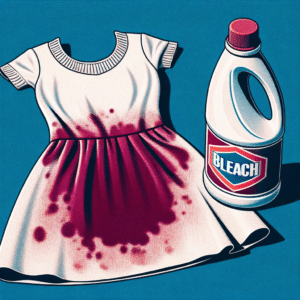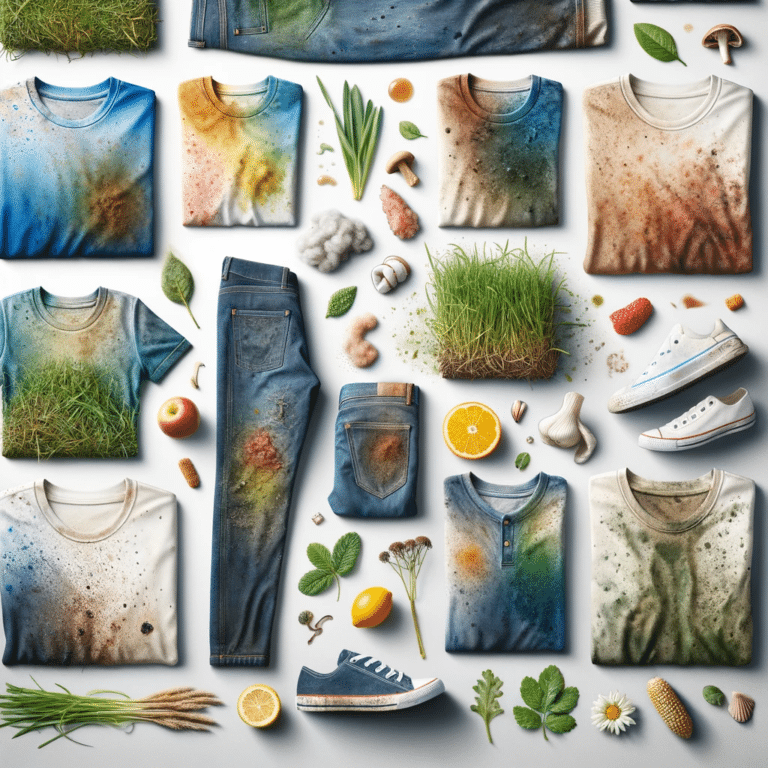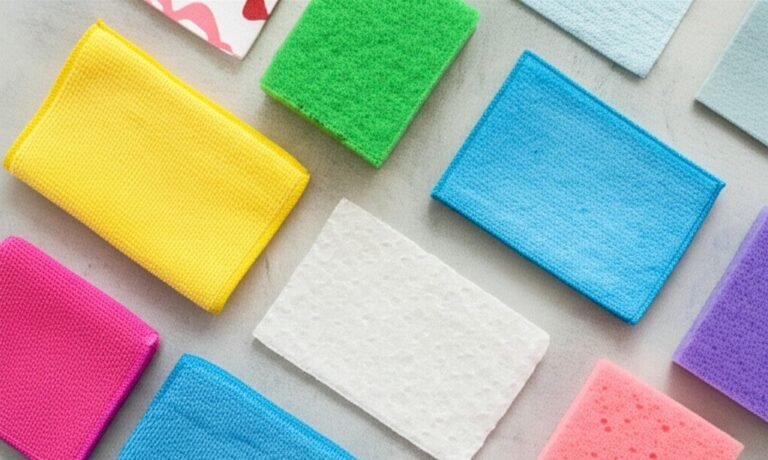Hey there, fellow stain fighters! Today, we’re diving into the world of tough stains on clothes. We’ve all been there – that coffee spill, the kids’ grass stains, or that mysterious mark that just won’t budge. But fear not! I’m here to share with you five proven methods to tackle those stubborn stains and make your clothes look brand new again. Let’s get started!
1. Pre-Treatment is Key
Time is of the essence when it comes to stains. The longer a stain sits, the more it bonds with the fabric, making it a tougher opponent to tackle. That’s why it’s crucial to address the spill or spot as soon as you spot it. Think of it like a first responder to a cleaning emergency – the quicker you act, the better the outcome.
When you first encounter a stain, your instinct might be to start scrubbing away. But hold up! Scrubbing can actually be counterproductive. It might spread the stain wider or even push it deeper into the fibers of your clothing. Instead, grab a clean, absorbent cloth or paper towel and gently dab at the stain. The goal here is to lift as much of the spill as possible, not to work it further into the fabric. Dab from the outside of the stain towards the center – this helps contain the stain and prevents it from spreading.
After you’ve done your initial dabbing, it’s time to pre-treat. This step is like giving your stain a heads-up that a full-on laundry assault is coming. Apply a stain remover or a small amount of liquid detergent directly onto the affected area. These products are designed to start breaking down the stain right away. But here’s a pro tip: don’t just slap it on and throw the garment in the wash. Let the remover or detergent sit on the stain for at least 5 minutes. This waiting period allows the cleaning agents to penetrate the fabric and start working their magic on the stain.
2. Natural Solutions for Organic Stains
Salt and Lemon Juice: This duo is fantastic for handling organic stains, especially on lighter fabrics. Salt acts as a gentle abrasive, helping to lift the stain, while lemon juice, with its natural bleaching properties, works to lighten and remove the stain. Here’s how to use this combination:
- Prepare the Solution: Squeeze fresh lemon juice over the stain. Make sure the stained area is thoroughly soaked in the juice. Then, sprinkle a generous amount of salt over the lemon juice. The salt doesn’t dissolve immediately, which is exactly what you want.
- Let It Sit: Allow this mixture to sit on the stain for about an hour. For tougher stains, you can even let it sit longer. The salt will start to absorb the stain, and the lemon juice will work to break it down.
- Gentle Scrubbing: After letting it sit, gently scrub the stained area. You can use an old toothbrush or just your fingers. This scrubbing action helps to work the lemon juice deeper into the fibers and assists the salt in lifting the stain.
- Rinse and Wash: Once you’ve scrubbed the stain, rinse the area thoroughly with cold water. After rinsing, launder the garment as you normally would.
This method is particularly effective for fresh organic stains and works wonders on fabrics that are safe to be treated with mild acid like lemon juice. It’s a great option for those who prefer using readily available kitchen items for cleaning.
Another great option involves using Hydrogen Peroxide and Dish Soap. This combination is particularly effective for colorful and tougher stains.
Hydrogen Peroxide and Dish Soap Method:
- Create the Mixture: Mix two parts hydrogen peroxide with one part dish soap. Hydrogen peroxide acts as a mild bleaching agent, which helps in lifting stains, while the dish soap cuts through the grease and residue.
- Apply to the Stain: Gently apply this mixture directly to the stain. You can use a soft brush or a cloth to dab it on. Ensure the stain is fully covered by the mixture.
- Let It Work: Allow the mixture to sit on the stain for about 10 to 30 minutes. The duration depends on the severity of the stain. For tougher stains, a longer sitting time can be more effective.
- Gentle Scrubbing: After letting the mixture sit, gently scrub the area with a soft brush or cloth. This helps the solution penetrate deeper into the fibers and lift the stain.
- Rinse and Wash: Rinse the garment thoroughly under cold water. Ensure all the mixture is washed out before laundering the garment as usual.
This method is safe for most fabric types but is particularly effective on sturdier fabrics. As always, it’s wise to do a spot test on a hidden area of the fabric to ensure there’s no discoloration or damage.

3. Tackling Oil-Based Stains
Dish soap is a superhero in the fight against oil and grease stains. It’s designed to cut through grease on your dishes, and it works just as well on your clothes. Here’s how to use it: find a good quality dish soap – one that’s known for its grease-fighting power. Apply a small amount directly onto the stain. Then, gently rub the soap into the fabric. You don’t need to be too aggressive here; a gentle touch is enough to let the soap do its job. The soap will start to break down the oil, making it easier to wash out. After rubbing, rinse the area with hot water. Hot water helps to dissolve oils, making it easier for the dish soap to work its magic. Follow this up with a regular wash cycle, and you’ll be amazed at how effective this simple solution can be.
Now, for a somewhat unconventional but surprisingly effective method – using white chalk on grease stains. It might sound a bit strange, but chalk has excellent absorbing properties. Simply take a piece of white chalk and rub it over the grease stain. The chalk powder works to absorb the oil, lifting it from the fabric. Let it sit for a few minutes to absorb as much oil as possible. Then, brush off the excess chalk and proceed to wash the garment as usual. This method is particularly handy if you’re in a rush or don’t have dish soap on hand.
4. Dealing with Ink and Paint Stains
When it comes to ink stains, rubbing alcohol can be a real lifesaver. Its effectiveness lies in its ability to break down the ink’s chemical components. Start by placing a clean cloth or paper towel under the stained area to absorb the excess ink. Then, take a cotton ball or a small cloth soaked in rubbing alcohol and gently dab it onto the ink stain. You’ll notice the cotton ball picking up some of the ink, which is a sign that the process is working. Continue dabbing with fresh alcohol-soaked cotton balls, replacing them as they pick up the ink. This method requires patience, as you might need to repeat the process several times, especially for larger or darker stains. After the stain has significantly faded or disappeared, rinse the area thoroughly with cold water. Then launder the garment as usual.
Now onto the hairspray trick – a surprising but effective remedy for ink stains. Hairspray contains alcohol and other solvents that can help dissolve the ink, making it easier to wash out. Here’s how to use it: spray a generous amount of hairspray directly onto the ink stain. Make sure the stain is completely saturated. Let the hairspray sit on the stain for a few minutes. This gives it time to penetrate and start breaking down the ink. After a few minutes, gently dab at the stain with a clean, damp cloth. You should start to see the ink transferring onto the cloth. Once you’ve dabbed as much of the ink out as possible, launder the garment according to the care instructions.
Both these methods are particularly useful for ink stains, but they can also work on some types of paint, especially if the paint is water-based. As with any stain removal technique, it’s always a good idea to test a small, hidden area of the fabric first to ensure there’s no damage or discoloration.
5. Special Treatments for Tough Stains
Protein stains like blood, sweat, and food can be tricky because they tend to bind tightly to fabric fibers. Enter enzyme cleaners. These cleaners contain biological enzymes that are specifically designed to break down protein-based stains. This makes them incredibly effective for treating such spots. Here’s how you use them: Apply the enzyme cleaner directly to the stain, ensuring it’s completely covered. The enzymes need a bit of time to work their magic, so let the cleaner sit on the stain for a while – usually about 30 minutes to an hour, depending on the severity of the stain. These enzymes work by breaking down the proteins into smaller molecules, which can then be washed away easily in the laundry. After the treatment, wash the garment as per the care instructions. This method can be particularly effective on garments that have been stained with organic materials, like blood or sweat.
Then there are those challenging set-in stains that seem to have become a permanent part of your clothing. For these, oxygen bleach is a great option. Unlike chlorine bleach, oxygen bleach is color-safe and less harsh, making it suitable for a wide range of fabrics. To use it, mix oxygen bleach with water – follow the instructions on the product for the correct ratios. Soak the stained garment in this solution. The soaking time can vary from an hour to overnight, depending on the stain’s stubbornness. The oxygen bleach works by releasing oxygen molecules that break down the stain’s bonds, making it easier to remove during the wash cycle. After soaking, wash the garment in your regular wash cycle.

Tough Stains on Clothes Begone!
Stain removal can often feel like a daunting battle, with every new spill or spot presenting a unique challenge. But armed with these tips and tricks, you’re now equipped to face even the most stubborn stains with confidence. The key to success lies in prompt action and choosing the right method for each type of stain. Whether it’s a dab of dish soap for a grease mark, a splash of hydrogen peroxide for a pesky blood spot, or the gentle bleaching power of lemon for those underarm stains, each method has its place in your cleaning arsenal. Remember, every stain has its weakness, and with a little patience and the right approach, you can defeat them. So, next time you’re faced with a daunting stain, take a deep breath, pick your strategy, and get ready to restore your clothes to their former glory.
We all know that life gets busy, and sometimes, despite our best efforts, certain stains can prove to be too challenging or time-consuming to remove. That’s where professional help comes in handy. At Toronto Shine Cleaning, we understand the science of stains and have a plethora of tools and techniques at our disposal to tackle them. From general household cleaning to specialized stain removal, our experienced team is equipped to handle a wide range of cleaning challenges. Whether it’s a delicate fabric that needs a gentle touch, or a stubborn stain that refuses to budge, we’ve got the expertise to deal with it effectively.
Moreover, Toronto Shine Cleaning doesn’t just stop at making your clothes look great. We offer a comprehensive range of cleaning services that cater to all your needs. Deep cleaning, move-in/move-out cleaning, office cleaning, and even post-construction clean-up – whatever your cleaning needs might be, we have a solution. Our team of professionals is dedicated to providing top-notch service, ensuring that your space is not only clean but also healthy and welcoming.



















